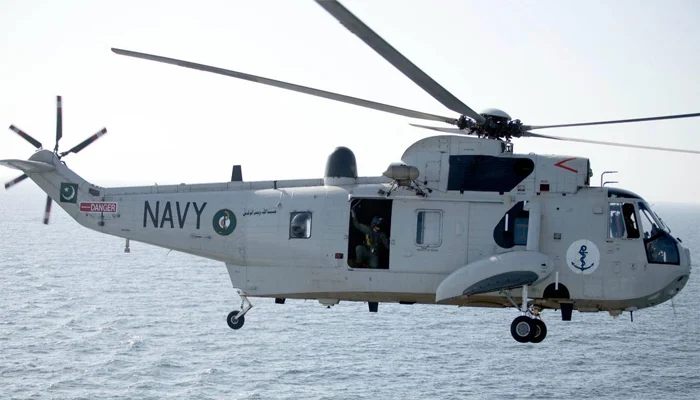A Pakistan International Airlines (PIA) flight bound for Dubai encountered a major emergency when a hydraulic system failure caused the plane to suddenly descend 26,000 feet. The incident occurred shortly after takeoff from Karachi, raising alarms and causing the pilot to declare an emergency. However, thanks to the pilot’s swift response and expertise, the flight was able to continue its journey and land safely in Dubai.
The Incident: A Sudden Descent
PIA flight PK-213, an Airbus A320, departed from Jinnah International Airport in Karachi at 2:05 PM local time. The flight was headed to Dubai, a routine journey for the national carrier. However, approximately one hour after takeoff, while the aircraft was near Muscat, the hydraulic system malfunctioned, a critical issue that led to the plane’s rapid descent.
According to PIA’s spokesperson, the aircraft descended 26,000 feet in a span of just six minutes, a dramatic drop that understandably caused alarm among the crew and passengers. A hydraulic system failure can severely impact an aircraft’s control mechanisms, including the flaps, landing gear, and steering, making it a high-risk emergency.
Emergency Declaration and Response
Upon realizing the malfunction, the pilot quickly declared an emergency and contacted the Air Traffic Control (ATC) in Muscat for assistance. The plane was brought down to an altitude of 10,000 feet for better control and to assess the situation. The radar operators were alerted, and emergency procedures were set into motion.
As the aircraft descended, the passengers remained unaware of the exact technical failure, although many sensed something was wrong due to the sudden altitude drop and the captain’s declaration of an emergency. The cabin crew worked to maintain calm, following the standard protocols for handling such high-stress situations.
Pilot’s Expertise Prevents Disaster
Despite the gravity of the situation, the pilot managed to control the aircraft and stabilized the hydraulic system. Displaying exceptional skill, the pilot was able to remove the fault mid-flight, allowing the plane to continue its journey to Dubai. However, because of the hydraulic failure, the flight remained at a lower altitude than usual, flying at approximately 10,000 feet for the rest of the journey.
The flight, originally scheduled to take about two hours, extended by roughly an additional hour as the plane flew at this lower altitude, which required extra caution. Ultimately, the Airbus A320 made a safe landing at Dubai International Airport, bringing relief to the passengers and crew.
Safety Protocols and Inspection
After the safe landing, the aircraft underwent a thorough inspection at Dubai airport. Aviation authorities and PIA’s maintenance team examined the hydraulic system to identify the exact cause of the malfunction and ensure the plane was safe for future flights. Following the inspection and necessary repairs, the aircraft was cleared for further operations.
It was scheduled to operate its next flight from Dubai to Islamabad and then onwards to Skardu, a major domestic route for PIA.
PIA’s Response and Safety Measures
In light of the incident, PIA’s spokesperson praised the pilot’s professionalism and calm handling of the situation. The pilot’s expertise not only prevented a potential disaster but also ensured that all passengers and crew arrived safely at their destination.
The spokesperson also emphasized that passenger safety is the airline’s top priority and that such emergencies, though rare, are handled with the highest standards of aviation safety protocols. PIA is committed to improving its fleet maintenance and ensuring all its aircraft are in optimal condition before every flight.
The Role of the Hydraulic System in Aviation
The hydraulic system is one of the most critical components in modern aircraft. It controls key functions such as landing gear extension and retraction, steering, braking, and flight control surfaces like flaps and spoilers. Any malfunction in this system can lead to significant control issues, making it challenging for pilots to manage the aircraft’s movements, particularly during takeoff and landing.
In this case, the malfunction occurred mid-flight, making it a highly dangerous situation as the plane lost much of its ability to maintain normal altitude and control. Thanks to the pilot’s quick decision-making and technical skill, disaster was averted, and the aircraft continued flying despite the challenges.
A Close Call
The emergency onboard PIA flight PK-213 highlights the importance of pilot training, aircraft maintenance, and safety protocols in modern aviation. Although the hydraulic system failure was a severe issue that caused the plane to descend rapidly, the pilot’s quick actions and expertise prevented a tragedy. This incident will likely prompt PIA and aviation authorities to reevaluate their maintenance processes and safety checks to prevent similar occurrences in the future.
While emergencies like this are rare, they serve as a reminder of the complexities involved in air travel and the dedication of aviation professionals to ensuring passenger safety, no matter the circumstances.



